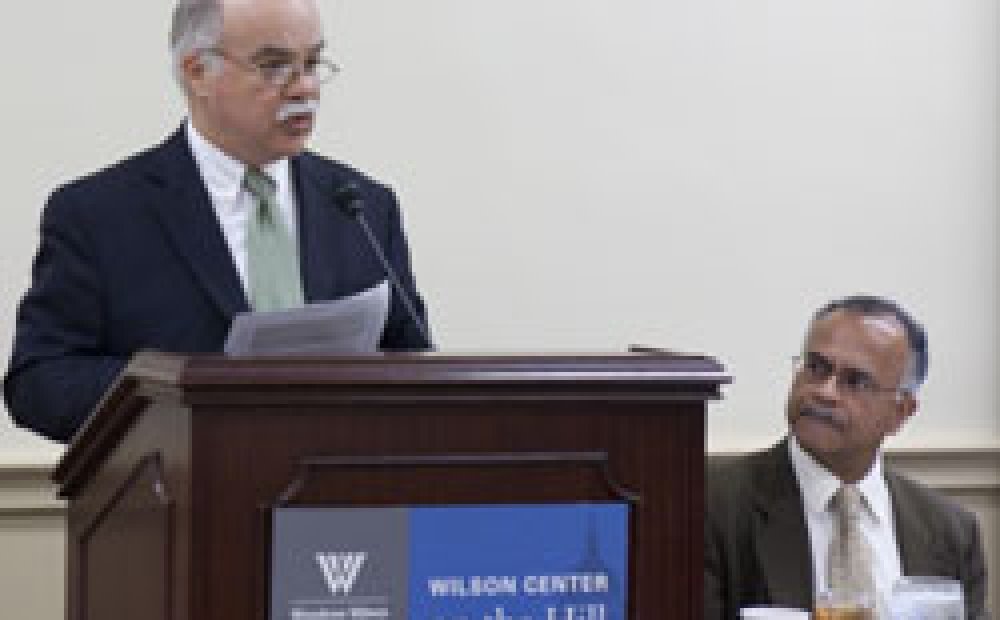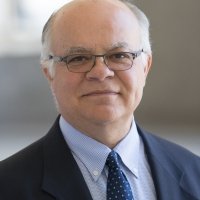Brazil and Africa: Cooperation for Innovation in Agriculture and What the U.S. Can Do

On Monday, May 16 the Brazil Institute and Wilson Center on the Hill jointly hosted a lunch event focusing on African agriculture and opportunities for partnership and development in this area.
Paulo Sotero, the director of the Brazil Institute, opened the discussion by introducing the Brazilian Agricultural Research Corporation (Embrapa). Embrapa was founded in the 1970s and has made enormous achievements in improving the productivity of tropical agriculture.
Ladislau Martin-Neto, the President of LAPEX-USA, Embrapa’s ‘virtual’ laboratory in the United States, also introduced Embrapa, reiterating that before Embrapa was created, Brazil was a net importer of food. Thirty years later, Brazil is the second largest net exporter of food in terms of countries.
Martin-Neto went on to detail some of the similarities between Brazilian and African climates and biomes. Both Brazil and Africa partially belong to the savannah biome, where soil is naturally acidic and aluminic, rainfall can be sporadic, and water retention in the soil is low. Although these are all formidable challenges to agriculture, Brazil has been very successful in adapting soybeans to this climate. Given Embrapa’s substantial achievements and the similarities of the African and Brazilian savannahs, Martin-Neto said that it was natural that Embrapa would establish partnerships with African governments and scientists. With financial assistance from the Minister of Foreign Relations and the Brazilian Agency for Cooperation (ABC), Embrapa opened an agricultural research office in Accra, Ghana in 2006. This office serves as a training center and a place for research mobilization.
To conclude, Martin-Neto emphasized that Embrapa does not work alone with African clients and counterparts. Along with the World Bank and support from governments like Japan, Embrapa has projects across the African continent, from a rice cultivation in Senegal to training local scientists in Mozambique.
The next speaker, Erick Fernandes, an Adviser on Latin America and Caribbean Region, Agriculture and Rural Development at the World Bank, focused on the Bank’s agricultural activities in Africa. He first acknowledged, however, the debt owed to the United States for establishing a regime on food security beginning in the 1970s. This regime included a program that was “very noble and visionary” and focused on North-South relations, including a provision that invited promising African students to the United States to learn about agriculture. “Decades work of investments and institution building,” he said, “set the seeds for the collaboration and cooperation” that we see occurring today.
Fernandes explained that about eight billion dollars of the annual World Bank budget is marked for agricultural and rural development. In contrast, the Brazilian Development Bank (BNDES) alone spent 140 billion dollars last year on the same kinds of projects. Yet despite a restricted budget, Fernandes was optimistic: the World Bank leverages its resources “strategically.” Moreover, the Bank uses its experiences to formulate best practice consensuses, which it then distributes to other projects in Africa. “Brazil is a very valuable source of experience,” Fernandes explained. Although the Bank’s activities in Brazil are “not always [directly] applicable, they are valuable to assess” in terms of project formulation and implementation in Africa.
Fernandes also noted that the World Bank is currently connecting client agencies with Embrapa and underscored the latter’s “very valuable contributions.” Additionally, as part of an effort to investigate potential public-private partnerships, the World Bank has approached the Bill and Melinda Gates Foundation and top corporations like Google. “We need the best minds and the best science,” Fernandes explained, to tackle ‘mega-events’ and climate change, issues about which the Bank’s African stakeholders are increasingly vocal.
Marcella Szymanski, a Foreign Affairs Officer in Agriculture, Biotechnology, and Textile Trade at the U.S. Department of State, spoke after Fernandes and presented three more themes for discussion: agricultural partnerships between the United States and Brazil; Brazil-US-Africa trilateral cooperation; and the imperative for agricultural cooperation generally.
As to the first topic, Szymanski began by noting the foundation of bilateral agricultural partnerships. She pointed out the Fulbright Brasil program, which, since its creation in 1957, has brought over 5,500 Brazilian scholars to the United States. Szymanski also noted university exchange programs and LABEX-USA. This bilateral cooperation has been fruitful: in Brazil, agricultural extension and tropical research achievements, along with initiatives like “Feed the Children” and the “Zero Hunger Program” have led to a 70 percent reduction in malnutrition.
In terms of United States-Brazil-Africa agricultural opportunities, Szymanski noted that most activity is an extension of existing work. Lusophone cooperation and tropical agriculture both “add a real debt” to current achievements. Szymanski also mentioned the “Memorandum of Understanding for the Implementation of Technical Cooperation Activities in Third Countries” signed in 2010 by U.S. Secretary of State Hilary Clinton and Brazilian Foreign Minister Celso Amorim. She also highlighted the March 2011 bilateral Protocol of Intentions “for the Expansion of Technical Cooperation Activities in Third Countries,” which focuses specifically on agriculture, food security, and health initiatives. As an example of this movement towards trilateral cooperation, Szymanski referred to a joint-program being implemented in Mozambique that focuses on small crop horticulture, improving the national market and information systems, and feeding children in vulnerable areas.
More generally, Szymanski pointed out that scientists have made huge strides in creating crops like drought resistant corn and disease resistant bananas. They have used biotechnology to augment the efficiency with which some crops use nitrogen, and to increase the salt tolerance of other crops. Moreover, scientists have increased the mineral, protein, and vitamin content of food staples like cassava and rice. Insofar as future cooperation, Szymanski noted that there was a “rich process of outreach,” and that next year there will be continued conferences in biotechnology, resource use, and public policies.
Drafted by Jillian Macnaughton,
Paulo Sotero, Director, Brazil Institute
Speakers

Hosted By

Brazil Institute
The Brazil Institute—the only country-specific policy institution focused on Brazil in Washington—aims to deepen understanding of Brazil’s complex landscape and strengthen relations between Brazilian and US institutions across all sectors. Read more
